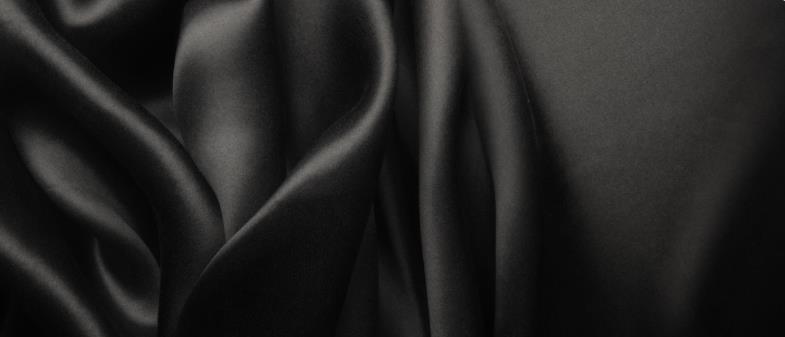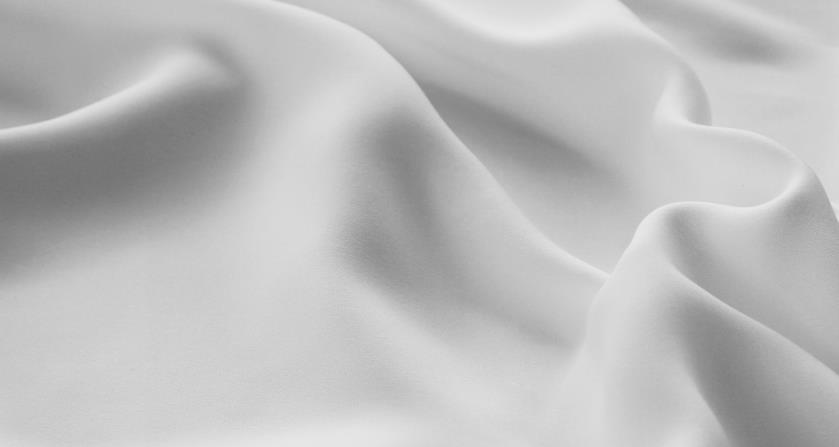The beauty and majesty of silk fabric have been renowned for centuries. Silk has even made its mark in history by paving the way to trade between the East and the West.
Silk as a fabric has inspired different fashion trends over the eras, and always calls to mind fabulous luxury and comfort. Have an in-depth look at this influential fabric with our guide!
What is Silk Fabric?

Silk fabric is a natural fiber woven into shiny, strong, and versatile textiles. It is harvested from silkworm cocoons of different varieties all over the world, providing an interesting international portfolio of unique silks.
It is a strong protein, called Fibroin, that makes up the silk fiber. The Bombyx mori silkworm alongside spiders that spin webs are able to produce this special fiber with their bodies.
Today, silk is one of the most revered fabrics and is highly associated with nobility and high fashion. It continues to be used not only for couture but presents several cases to be more useful in surgery and biomedicine.
Where does Silk come from? We cover its history, characteristics, uses, and more.
History of Silk
The first known production of silk was in the Chinese Neolithic period. Its origins trace from a folk myth about the legendary empress Hsi-Ling-Shih, who discovered a silkworm cocoon in her mulberry tea where it unraveled into a fine thread. It was a precious commodity in China, and its fame spread to the Western World thanks to the Silk Road trading route.
How Is Silk Made?
How is this beautiful fabric start for a simple silkworm cocoon? Read on to find out.
Farming Silkworms
This process is also known as Sericulture. Silkworm farms are created to harvest cocoons constructed of silk. The silkworms may be fed a special diet that affects the quality of the silk they spin.
Thread Extraction
The cocoons are harvested and boiled in order to soften the natural glue that hardens the silk cocoon. The silk is then brushed out and extracted from the cocoon structure into threads.
Spinning
The threads that have been prepared are spun in preparation for the weaving step.
Weaving
The silk is added to the loom and is handwoven by master craftspeople into different styles of fabrics.
Finishing
Sometimes, the dying process is done after weaving. Other additives may also be applied to the silk fabric. Then, it is prepared to be sold and produced into fine silk garments all over the world.
Where is Silk Fabric Produced?
Not only is China the origin of silk thousands of years ago, but it is also the number one producer of silk today. The next biggest producers are India, Uzbekistan, and Thailand.
How Much Does Silk Fabric Cost?

Like many other fabrics, different types of silk fetch very different amounts on the market. Depending on the silk farm and the type of silkworms being used, premium silk can cost up to ten times more than the silk of lower quality. Not all silks are equal!
Is Silk Natural or Synthetic?
Silk is a natural product that is produced by silkworms and harvested from their cocoons. It is known as the strongest naturally-occurring fiber on earth. While stronger synthetic fibers have been discovered, silk still holds its prestige because of these amazing qualities.
What Different Types of Silk Fabric are There?
In this list, the types of silk we count are the naturally occurring silks, as well as certain variants of silk weave.
Mulberry Silk
This is the silk of Chinese legend and continues to be the most popular kind of silk in the world, as well as the highest quality silk available. It is named “Mullberry” silk because the silkworms are fed a restricted diet of mulberry leaves, which produces a very fine thread.
Tussar Silk
Tussar Silk is woven from a silkworm that is relative to moths that live in certain trees in the forests of South Asia. This type of silk is produced in China, India, Japan, and Sri Lanka. Indian sarees are typically made out of this fabric.
Eri Silk
Eri silk is from a special silkworm from Assam, India. It is harvested without killing the silkworm inside the cocoon, earning it the consideration of being one of the most sustainable fibers on the planet.
Muga Silk
Another type of silk from Assam, India, Muga silk has an interesting characteristic of becoming even more lustrous and shiny after each wash.
Brocade
Brocade is a luxurious woven fabric usually made from various colored silks. It is a type of weave that displays wonderful designs, typically floral in nature.
Chiffon
Silk chiffon is a type of chiffon made out of silk – the thin lightweight fabric creates beautiful drapes and is typically seen in women’s eveningwear.
Silk Satin
Satin is a type of weave that creates a shiny fabric surface that is soft and elastic. Silk in a satin weave is delicate and creates beautiful drapes.
Crepe
Crepe is a thin, lightweight fabric made in a lot of fabrics but traditionally made in silk. It is usually layered and structured for beautiful designs.
What are the Pros and Cons of Silk Fabric?
Here are some of the pros and cons that could help you decide if silk is the fabric for you.
Pros
- Lightweight – the light fabric feels cool on bare skin
- Breathable – silk has decent breathability and is comfortable in most climates
- Durable – when taken care of, silk can last a very, very long time
- Wrinkle-resistant – it’s good for traveling since it doesn’t wrinkle or crush very easily.
Cons
- Degrades with sun exposure – silk can get damaged with exposure to the sun or extreme heat
- Water and sweat stains show up – silk is not absorbent as most fabrics and wet spots tend to show up
- High quality but costly – genuine high-quality silk is an investment that not many can afford
The Primary Uses of Silk Fabric
Silk is a versatile fabric, and some of its uses may even surprise you, aside from what you may expect.
Fashion Clothing and Accessories
The characteristics of silk make it an ideal fabric for various kinds of clothing all over the world. Its unique feature of conforming to the body’s temperature makes it cool enough for the summer, but insulating enough for the winter.
Furniture
The luxurious fabric was a beautiful drape that is celebrated in many hanging interior decoration items. The smooth and comfortable fabric also makes great cushioning, especially when there is a distinct design or print applied on the silk’s surface.
Industrial
Before the invention of synthetic fibers like nylon and polyester, silk was used in parachutes, beddings, tires, packaging, and even as bags of gunpowder.
Medical
Silk as a natural substance has been used as a biomaterial for dressing wounds. Their use is explored in surgery and use as artificial skin. They have also been used in collagen and thrombin production.
Why is Silk so Expensive?
If you look at the process of creating silk, you will see that it takes time and effort to produce. Not only is it a costly set-up, but it’s also time-consuming. A single silkworm cocoon doesn’t produce a lot of silk. In fact, it takes 5,500 silkworms to produce just one kilo of silk.
Will Silk Fabric Shrink?
Real silk does shrink in certain situations, for example, the first wash. Because it’s a natural fabric, the effect of heat may cause the silk to shrink, unless the fabric’s weave is very tight, or if the garment has already been pre-washed.
Is Silk Fabric Suitable for the Summer?
Yes, silk is a great addition to your summer closet because of its lightweight nature and cool touch on bare skin. It also has the ability to conform to your body temperature so it’s a comfortable experience throughout the day.
How Can You Tell Real Silk?

If you are doubting that a piece is made of real silk, there are a couple of tests to try.
- Heat test – rub your hands vigorously on the silk. If it warms up, it’s likely to be real.
- Vision test – observe the sheen of the material and how it reacts to light sources.
- Price test – real silk costs a lot of money due to the intense and time-consuming process it goes through.
Can You Handwash Silk?
Yes – in fact, handwashing your silk delicates is your best bet. Remember to use mild water and gentle detergent when doing so. However, you still read the label and care instructions of your garment. Dry clean only garments might not do too well even when hand-washed, so take caution!
Can Silk Fabric Be Ironed?
Despite silk fabric’s strength, it doesn’t do too well against heat and you can potentially damage it using an iron. If you use an iron, ensure to use lower heat settings – some irons have a suggested setting for silks. Your best bet to remove wrinkles is to use a gentle steamer.
Is Silk a Breathable Fabric?
Silk is a nice lightweight fabric that is great to wear outdoors. However, while silk is breathable, you have other choices like cotton and linen as the best breathable fabric – silk is not very absorbent and can display sweat stains. Still, if the climate permits, silk garments are great for warmer weather due to their light feeling on the skin.
Conclusion
Silk is a wonder fabric that blends beauty and strength in one. This natural fiber is like diamonds of the world of textiles. Their importance throughout world culture and history has impacted everyday lives. The most high-quality silks still gain the admiration of many and the top dollar in the international market.
